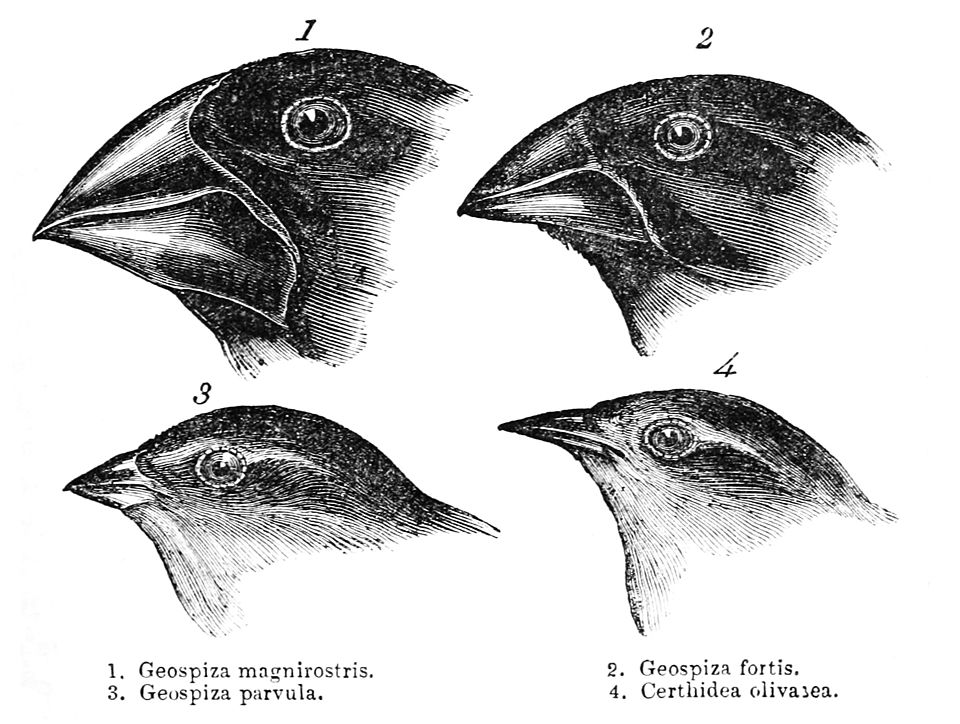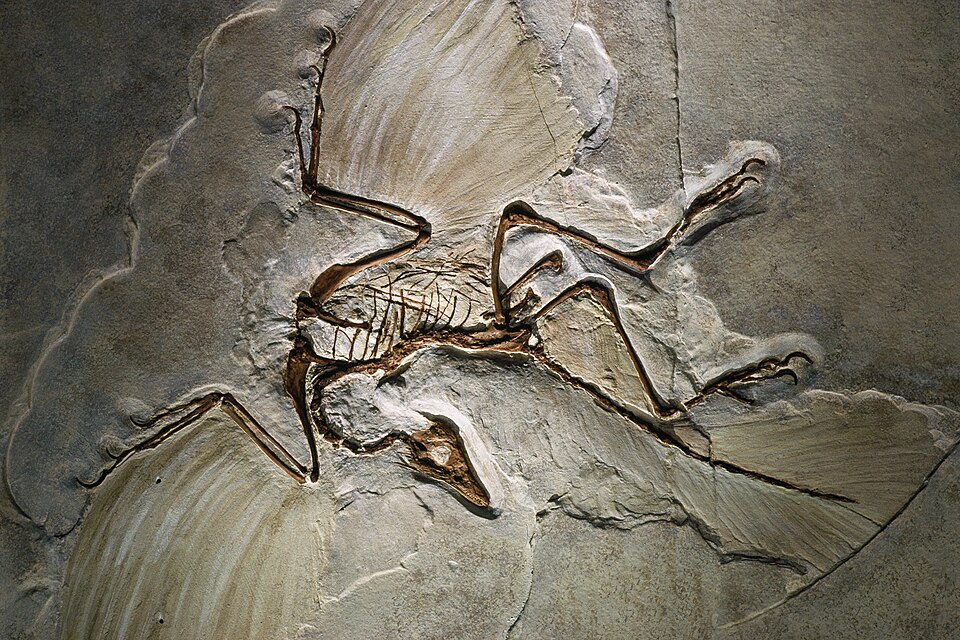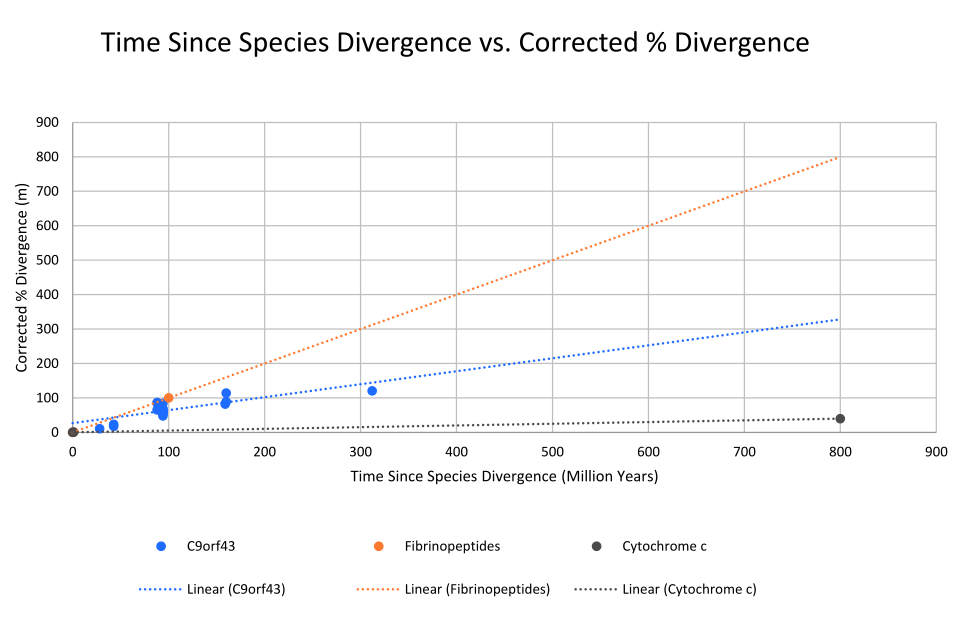OCR Specification focus:
‘Describe contributions of Darwin and Wallace and evaluate fossil, genomic DNA and molecular evidence supporting evolution by natural selection.
Evolution by natural selection explains how species change over time due to heritable variation and differential survival. Evidence from fossils, genetics, and molecular biology supports this process.
The Concept of Evolution by Natural Selection
Evolution refers to the gradual change in the heritable characteristics of biological populations over successive generations.
Natural Selection: The process by which individuals with advantageous traits survive and reproduce more successfully, passing these traits to their offspring.
This mechanism was independently proposed by Charles Darwin and Alfred Russel Wallace in the mid-19th century. Both recognised that within any population, individuals vary in their traits, and those best adapted to the environment tend to leave more offspring. Over many generations, this leads to adaptation and the emergence of new species.
The Contributions of Darwin and Wallace
Charles Darwin
Darwin’s key ideas were shaped during his voyage on the HMS Beagle (1831–1836), especially his observations of species variation in the Galápagos Islands.

Heads of four Darwin’s finches illustrating beak shape and size variation associated with diet. Such heritable variation provides the raw material for natural selection. This historic plate is uncluttered yet clearly shows morphological differences relevant at A-level. Source.
His major contributions include:
Recognition that variation exists naturally among individuals within a species.
Proposal that competition for limited resources results in the “struggle for existence.”
Assertion that individuals with beneficial adaptations have differential reproductive success, passing advantageous alleles to their offspring.
Over time, this leads to adaptation and speciation (formation of new species).
These ideas were published in On the Origin of Species (1859), which provided a comprehensive argument for evolution by natural selection, supported by extensive observational evidence.
Alfred Russel Wallace
Wallace developed similar ideas while studying species distribution and variation in the Malay Archipelago. His insights included:
Recognition that geographical barriers contribute to species divergence.
Emphasis on environmental pressures shaping adaptation and survival.
A collaborative paper with Darwin presented in 1858 to the Linnean Society, formally introducing the theory of evolution by natural selection.
Although Darwin’s work gained more prominence due to its depth of evidence, Wallace’s studies solidified the concept’s acceptance in scientific circles.
Key Evidence Supporting Evolution by Natural Selection
Fossil Evidence
Fossils provide a historical record of life on Earth, showing both continuity and change over geological time.
Fossil evidence supports evolution in several key ways:
Transitional forms demonstrate intermediate characteristics between ancestral and descendant species (e.g., Archaeopteryx linking reptiles and birds).

Fossil of Archaeopteryx lithographica from the Late Jurassic. The specimen shows feather impressions alongside reptile-like traits (teeth, long bony tail), exemplifying a transitional form. Real-world fossil evidence complements the morphological patterns discussed in the notes. Source.
Stratification in rock layers reveals a chronological sequence, showing older species in deeper layers and newer ones above.
Morphological changes across time, such as the gradual evolution of the horse’s hoof from multi-toed ancestors, illustrate adaptation to environmental change.
Fossil records also provide evidence of extinction and adaptive radiation, highlighting how environmental shifts influence species survival.
Genomic DNA Evidence
Advancements in molecular biology have allowed scientists to compare DNA sequences across species, revealing strong genetic continuity.
Key genomic evidence includes:
All living organisms share the universal genetic code, suggesting a common ancestor.
Comparative genomics shows that closely related species have more similar DNA sequences. For example, humans and chimpanzees share about 98–99% of their DNA.
Conserved genes, such as those coding for fundamental metabolic enzymes, indicate shared ancestry across diverse taxa.
Molecular clocks use mutation rates in DNA to estimate divergence times between species, supporting timelines derived from fossil records.

A molecular clock graph comparing relative evolutionary rates of different proteins. It illustrates that some molecules accumulate substitutions faster than others, a principle used to estimate divergence times. The chart is minimalist and suitable for A-level; it focuses on rate differences only. Source.
Molecular Clock: A method that uses the rate of genetic mutations to estimate the time since two species diverged from a common ancestor.
These genetic similarities provide compelling evidence for descent with modification, a central tenet of Darwin’s theory.
Molecular and Biochemical Evidence
Beyond DNA, other molecular features reinforce evolutionary relationships:
Protein structure comparisons (e.g., cytochrome c, haemoglobin) reveal homologous amino acid sequences, reflecting evolutionary closeness.
Immunological studies, where antibodies react with proteins from different species, indicate degrees of relatedness based on antigen similarity.
Endogenous retroviruses (ERVs) — remnants of ancient viral infections embedded in genomes — appear in the same locations in related species, further confirming common descent.
Mitochondrial DNA (mtDNA) analysis helps trace maternal lineages, offering insights into human evolution and migration patterns.
These biochemical markers act as molecular fossils, showing inherited characteristics at the chemical level.
Integration of Fossil, Genomic, and Molecular Evidence
The convergence of multiple lines of evidence has transformed evolutionary theory into a robust scientific framework:
Fossil evidence provides a timeline and morphological transitions.
Genomic DNA identifies genetic continuity and divergence.
Molecular studies reveal biochemical similarities and differences that correspond with evolutionary distances.
Together, they demonstrate that natural selection operates on genetic variation within populations, leading to gradual change over time.
Modern Understanding: The Synthetic Theory of Evolution
The Modern Synthesis (early to mid-20th century) integrated Darwin’s theory of natural selection with Mendelian genetics, forming the foundation of contemporary evolutionary biology.
Key principles include:
Mutation introduces new genetic variation.
Recombination during sexual reproduction increases diversity.
Selection pressures act on phenotypes, influencing allele frequencies in populations.
Genetic drift and gene flow contribute to evolutionary change, particularly in small or isolated populations.
This unified model explains how microevolutionary changes within populations can lead to macroevolutionary patterns observed in the fossil record.
Continuing Evidence and Technological Advances
Modern research continues to reinforce Darwin and Wallace’s insights:
Genome sequencing has mapped complete genomes of thousands of species, revealing patterns of shared genes and adaptive mutations.
CRISPR and comparative genomics have clarified how small genetic changes yield significant phenotypic differences.
Experimental evolution studies (e.g., with bacteria such as E. coli) directly demonstrate evolutionary change over short timescales.
These advances confirm that evolution by natural selection remains the central organising principle of modern biology, explaining both the diversity and unity of life on Earth.
FAQ
Homologous structures have the same underlying anatomy but may serve different functions, indicating common ancestry. For example, the pentadactyl limb in humans, whales, and bats shows shared evolutionary origin despite functional differences.
Analogous structures perform similar functions but evolved independently in unrelated species due to similar environmental pressures, such as the wings of birds and insects.
Homologous structures provide stronger evidence for evolution by natural selection as they demonstrate divergence from a shared ancestor.
Molecular clocks rely on the assumption that mutations accumulate at a relatively constant rate over time. By comparing genetic differences between two species, scientists can estimate how long ago they diverged from a common ancestor.
Key steps include:
Identifying homologous DNA or protein sequences.
Measuring the number of base or amino acid differences.
Applying a known mutation rate to calculate divergence time.
This method complements fossil dating and helps refine evolutionary timelines.
DNA evidence is more precise because genetic sequences directly record evolutionary changes, whereas morphological traits can be influenced by environmental or developmental factors.
Genetic analysis can:
Reveal relationships between species with minimal visible similarity.
Identify shared mutations or genes inherited from a common ancestor.
Detect molecular evidence of convergent evolution where morphology misleads.
Therefore, molecular data confirm and extend conclusions drawn from fossil and anatomical evidence.
ERVs are remnants of ancient viral infections that became integrated into the germline DNA of ancestors and are inherited by their descendants.
The same ERV sequences found in identical chromosomal locations across related species indicate inheritance from a shared ancestor rather than independent infection.
For example, identical ERV insertions in humans and chimpanzees support their close evolutionary relationship and common ancestry.
Technological advances have revolutionised evolutionary biology by providing large-scale and precise genetic data.
Examples include:
Genome sequencing: Identifies millions of genetic differences across species.
Bioinformatics: Uses computational methods to analyse evolutionary trees.
CRISPR and gene editing: Allow experimental testing of gene function to trace adaptive changes.
Proteomics: Compares protein sequences to reveal deep evolutionary links.
These techniques provide direct molecular evidence for natural selection and evolutionary divergence.
Practice Questions
Question 1 (2 marks)
Describe the main contribution made by Alfred Russel Wallace to the theory of evolution by natural selection.
Mark scheme:
1 mark: States that Wallace independently proposed the theory of evolution by natural selection.
1 mark: Mentions that he recognised the role of environmental pressures or geographical isolation in driving adaptation and speciation.
Question 2 (5 marks)
Explain how evidence from fossils and molecular biology supports the theory of evolution by natural selection.
Mark scheme:
1 mark: Fossil evidence shows gradual changes in species over time or transitional forms between groups (e.g. Archaeopteryx).
1 mark: Fossils demonstrate that older species appear in deeper strata and newer species above, indicating a chronological sequence of evolution.
1 mark: DNA or molecular evidence shows that closely related species share more similar sequences or proteins (e.g. cytochrome c).
1 mark: Molecular clocks can be used to estimate when species diverged, providing timescales consistent with fossil data.
1 mark: Both fossil and molecular evidence support the concept of descent with modification from a common ancestor.

